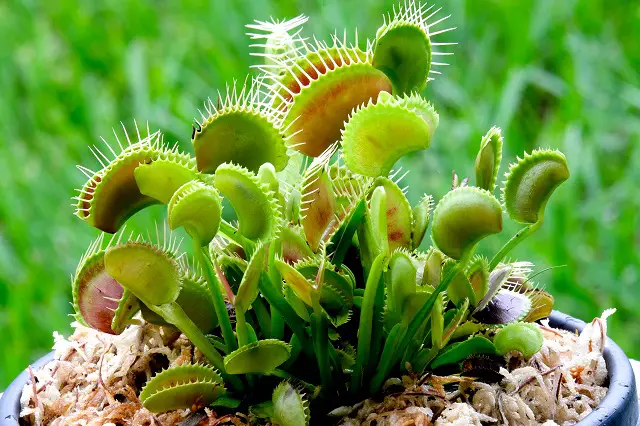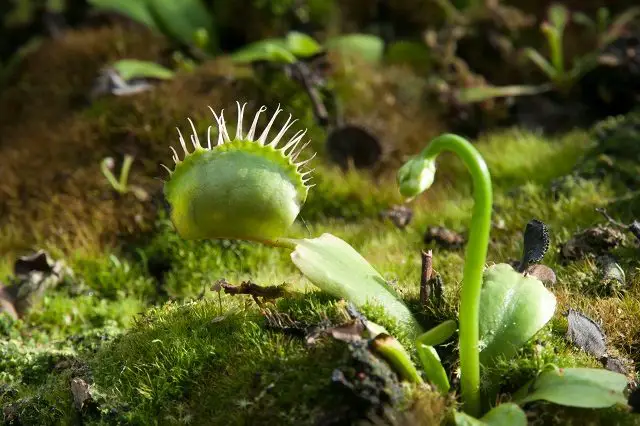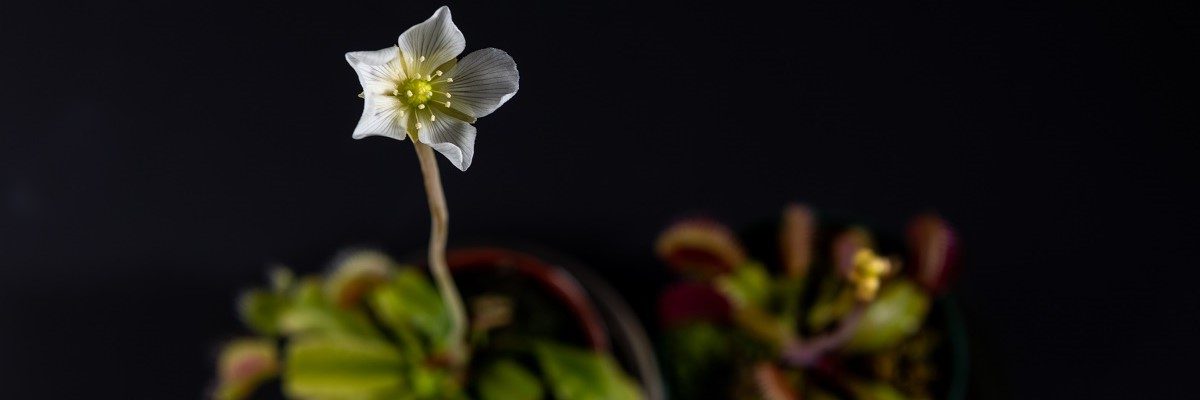Is It Easy To Grow Venus Flytrap From Seed?: Growing Venus flytrap from seed might seem like a daunting task, but with a little knowledge and patience, you can have success! It’s easy to get started – all you need is access to some seeds. Once you’ve got them, pollinating the flower and encouraging germination are both achievable tasks. After that, it’s just a matter of waiting for the seedlings to appear. You’re not alone in this journey – there are plenty of resources available if you find yourself stuck at any point. So don’t worry – by following this guide, you’ll soon be able to display your own unique Venus flytrap proudly!
Seed Availability
Pollinating and harvesting seed from the flower stalks is relatively simple with patience. The flowers receive pollen for about 1 to 1.5 days after they bloom, so you need to be prompt! A small artist’s brush can assist in transferring pollen from a younger flower to the stigma of a slightly older flower, ensuring the stigma is still fuzzy and the flower is open. Once pollinated, the petals will start to wilt, creating space for new growth in your garden.

Pollinating
Pollinating your Venus flytrap can be challenging but with practice, it becomes manageable. The flowers usually bloom between February and May in the Northern Hemisphere, depending on the climate. A small artist’s brush or another tool can be used to transfer pollen from a younger flower to the stigma of a slightly older one. Once pollinated, the petals will start to wilt, so ensure you’re transferring pollen from an open flower with a fuzzy stigma. This will maximize your chances of harvesting seeds for future use!
Seeds are typically ready for harvest 2-4 weeks post-pollination. If you opt to collect them, ensure they are entirely brown and dry before storing in an airtight container or baggie. Venus flytrap seeds can remain viable for about 1 year after harvesting if stored correctly. When planting, note that seedlings won’t appear immediately since they undergo a dormancy period before germination (around seven weeks).
So take your time learning how to pollinate your plants, and don’t forget that practice makes perfect! With enough patience and dedication, you’ll have no problem growing these fascinating little carnivores from seed – remember all of this helpful advice for successful results every time!
Germination
After harvesting the seeds, the germination process starts! You can sow your seeds directly in moist soil or on wet paper towels. If you choose the latter, transfer the seedlings into moist soil once they sprout. Maintain your Venus flytrap seedlings in a well-lit location and water regularly to keep the soil damp consistently. High temperatures (around 70 degrees Fahrenheit) can speed up germination time significantly.
Expect to see sprouts at around seven weeks. During this growth period, avoid over-watering or excessive sunlight exposure, as both can damage and stunt growth. After about ten weeks, depending on temperature and moisture levels, your Venus flytraps should have grown enough to enter their first dormancy period, which usually lasts between December and February in the Northern Hemisphere.
During dormancy, reduce watering and relocate them to a cooler area – preferably around 40-50 degrees Fahrenheit – until temperatures begin to rise again in March/April. This is when you should resume regular watering and place it back into higher temperatures to promote new growth without stunting development or leading to the plant’s death due to cold weather conditions.
With appropriate care throughout its life cycle, from pollinating flowers through germination and until its next dormancy period, growing a Venus Flytrap from seed can be an exciting experience that will reward you with a healthy plant that lives for many years!

Dormancy
After weeks of care, your Venus flytrap seedlings will enter a period of dormancy. This is a standard part of the plant’s life cycle. During its dormancy period, your Venus flytraps will:
- Slow down their growth rate
- Take in less water
- Stop producing flowers or flower stalks
- Seem almost dormant but are still alive and healthy
This time gives them an opportunity to conserve energy and prepare for future development. It also allows any new growth to become more established before new leaves emerge. You should continue to water them at regular intervals and maintain the same growing conditions.
Dormancy usually lasts until temperatures start to warm up in the springtime. You’ll begin noticing new growth emerging from the center of the rosette on some plants – these are called ‘pups’. Other times you may see new leaves appearing around the edges of existing rosettes- these are called ‘daughter’ plants. As temperatures increase, your Venus flytraps become more active.
The dormancy period is a vital part of caring for a Venus flytrap. Paying close attention might even allow you to spot some pups or daughters! Continue watering them regularly throughout this period, and when spring comes, they’ll be ready to grow more than ever before!
Frequently Asked Questions
How long does it usually take for a Venus flytrap to flower?
Growing a Venus flytrap from seed is something that can bring you closer to the natural world. You might wonder how long it typically takes for your plant to flower. Generally, the flower stalk of a Venus flytrap will appear between February and May in the Northern Hemisphere. After the flower opens, it is receptive to pollen for 1 to 1.5 days. If you choose to pollinate your plant yourself, use a small artist’s brush and transfer pollen from a younger flower onto the stigma of an older one; if it’s still fuzzy and open, then the stigma is receptive! Once pollinated, the petals will begin to die off – but don’t worry – this means that seed harvesting season has begun!
What is the best temperature for growing Venus flytrap seeds?
Growing Venus flytrap seeds is relatively easy, and the best temperature for them to germinate and thrive is between 60-80°F. To ensure that your seeds have the highest chance of success, you should think about keeping your setup in an area with plenty of indirect sunlight and a steady temperature range. Also, make sure to keep your soil moist but not wet. Keeping these conditions in mind will help give your Venus flytrap seedlings the best start possible!
What type of soil is best for growing Venus flytrap seeds?
For growing Venus flytrap seeds, the best soil is a combination of sphagnum peat moss and perlite that provides good drainage. A potting mix with two parts sphagnum peat moss to one part perlite or vermiculite will provide the perfect environment for your seeds to germinate and thrive. An important tip when planting is to keep the soil moist but not soggy. This can be done by misting the surface lightly every day or two until you see sprouts emerging from the soil.
Are there any special precautions I need to take when pollinating Venus flytrap flowers?
When pollinating Venus flytrap flowers, you must take special precautions! It’s a delicate process – if you make one wrong move, the entire thing could be ruined. To ensure success, use an artist’s brush to transfer pollen from a younger flower to the stigma of a slightly older flower. The stigma should still be fuzzy, and the flower open. Then, wait for the petals to start dying off – that means it has been successfully pollinated! But don’t stop there – you’ll need more information on harvesting seeds and caring for your new Venus flytrap baby if you want it to thrive.
How often should I water Venus flytrap seedlings?
When caring for Venus flytrap seedlings, it’s important to keep the soil lightly moist and provide plenty of humidity. Water your seedlings at least once a week, but do not allow them to sit in standing water. The soil should be damp but not soggy, and you may need to adjust how often you water based on the temperature and humidity levels in your growing environment. Make sure to check the soil before watering and only add water if it is dry.
Conclusion
Growing Venus flytrap from seed isn’t always easy, but it can be done with the right resources and knowledge. It’s estimated that only 1 in 5 seeds planted will actually germinate, so you’ll need to be patient and willing to experiment until you get it right. With a bit of luck and dedication, you can have your own Venus flytrap growing in no time. Good luck!


